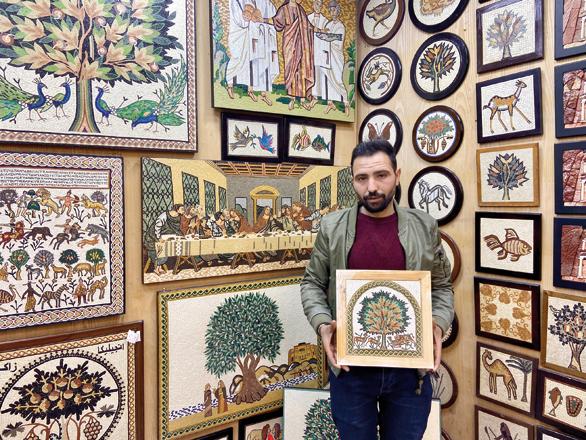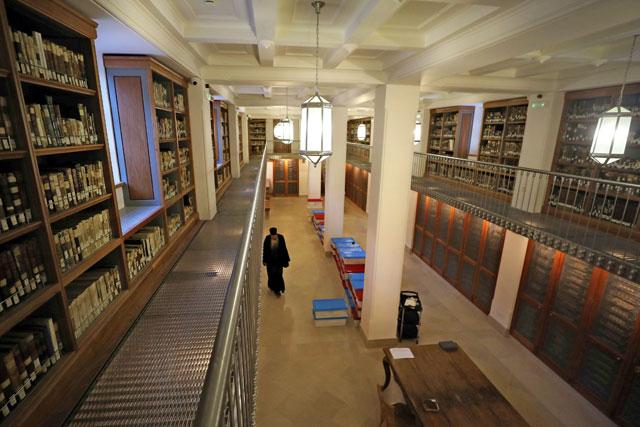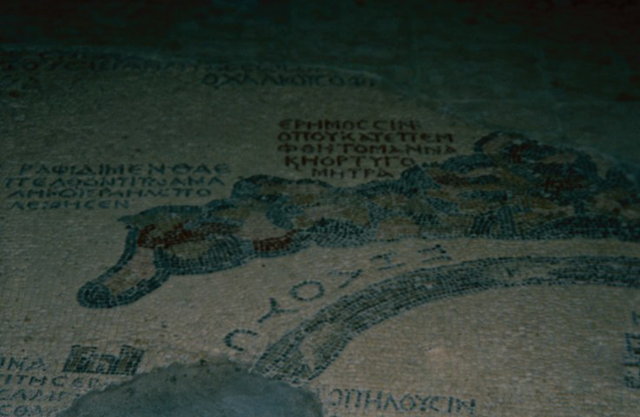You are here
New York’s Met presents 1,000 years of Byzantine influence on Christian African art
By AFP - Nov 22,2023 - Last updated at Nov 22,2023

A visitor looks at ‘Vita Icon of Saint George with Scenes of His Passion and Miracles’, while touring the ‘Africa & Byzantium’ exhibit during a press preview at The Metropolitan Museum of Art in New York (AFP photo)
NEW YORK — Mosaics, paintings, jewelry, ceramics, manuscripts from the 4th to the 15th century: the Metropolitan Museum of Art in New York is showing 200 ancient and mediaeval works that reflect a thousand years of influence of the Byzantine Empire on the Christian communities of Egypt, Tunisia and Ethiopia.
One of the wealthiest in the world, the museum has brought together gems from collections from Africa, Asia and Europe for an exhibition called “Africa & Byzantium”, from Sunday until next March.
The Met presented a preview this week to a few journalists with its partners, the Egyptian and Tunisian governments and the oldest Coptic Orthodox monastery in the world, Egypt’s Saint Catherine of Sinai.
Bringing together artistic, religious, literary and archaeological treasures, “Africa & Byzantium” shows the impact of the Byzantine Empire from its capital Constantinople — which was formerly Byzantium and is now called Istanbul — on Christianity, which spread in the Horn of Africa from the 4th to the 7th centuries.
According to Met CEO Max Hollein, the exhibit is “brings new focus and scholarship to an understudied field, expanding our knowledge of Byzantine and Early Christian Art within an expansive worldview”.
Visitors will be able to view painted manuscripts, textiles, marble mosaics, carved ivories from Nubia, gold jewelry from Egypt, wall paintings — many of them appearing part for the first time in the United States.
The pieces explore the links between cultural and multi-faith communities from the Mediterranean to the Red Sea, the Met said.
Tunisian Cultural Affairs Minister Hayet Guettat Guermazi told AFP the pieces show the world her country’s “rich cultural heritage that is the result of a mix of different civilizations that have occupied the Mediterranean” along with a “local African foundation”.
Archbishop Damianos, from Saint Catherine of Sinai, praised the exhibition, saying it “provides us with the opportunity to recall the universality of Byzantium, which is a proposal for freedom, unity, reconciliation, respect and peace, the peace that is so needed in our world today”.
Related Articles
MADABA — In Madaba, also known as the “City of Mosaics”, a third generation member of an artisan family that has been making mosaics profess
ST CATHERINE’S, Egypt — At St Catherine’s Monastery at the foot of Egypt’s Mount Sinai, the silence in the library is broken only
AMMAN — Mosaics decorated some of most prestigious buildings in the Ummayad Caliphate: Bath houses, mosques, palaces and private villa














